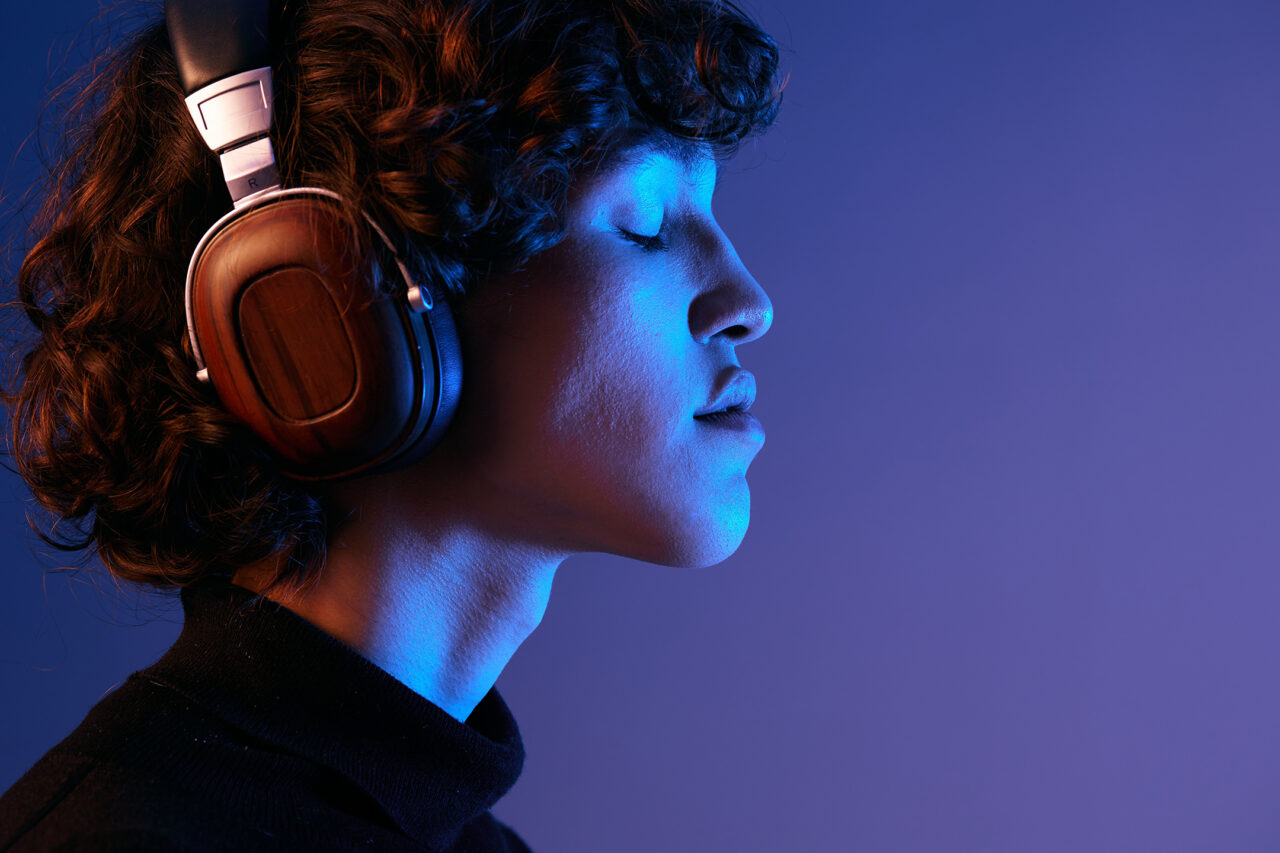 BY Samuel Mathis, MD, MBA, Assistant Professor, UTMB
BY Samuel Mathis, MD, MBA, Assistant Professor, UTMB
Every other week, I have a patient who comes to see me for acupuncture. During his visit, he always listens to a particular style of music known as binaural beats because it helps with his pain. In fact, the research shows binaural beats may be useful for many health conditions, and we are still learning about all the possibilities of their use.
Binaural beats refer to a type of music that utilizes two closely related tones that are separately listened to in each ear. The splitting of these two sounds creates an illusion in the brain where the patient hears three sounds total. The third tone is the difference in hertz (Hz) between the original two tones. The tones are usually within 30Hz difference. For example, listening to a binaural beat of 140 Hz in one ear and 150 Hz in the other will create the binaural third tone of 10Hz. Many studies are now working to identify what the effect of these tones are on the mind and body. For example, lower tones have more of a relaxing effect, whereas higher tones have a cognitive improving effect.
Studies looking into binaural beats are looking to identify how patients are able to train their brain to improve memory, concentration, focus, and can even improve states such as anxiety or insomnia using binaural beats. A systematic review published last year reviewed 14 studies that utilized EEGs to study brain wave patterns while listening to binaural beats. The authors hypothesized that listening to binaural beats led to the brain’s electrocortical activity oscillating at the same frequency, known as brainwave entrainment hypothesis (1). The study found mixed results for this hypothesis, due to differences in study designs, but it did highlight the need for more research in this area. One of the interesting findings of this study is that we do not have a consistent means of testing the effects of binaural beats on patient’s brains.
While unable to explain how these sounds affect the brain, there are still numerous studies that find they have an effect. One study published recently found that exposure to binaural beats before and during a task improved memory recall and attention to tasks. The binaural beats affected the brain’s theta and beta waves the most (2). The effect was moderate but leads to calls for more significant research on the effect binaural beats have on the brain. There were some interesting differences in the studies in this systematic review, some studies were looking at more immediate recall, while others found that the long-term effects on memory were also affected by binaural beats.
Outside of the effect on memory, binaural beats also affect feelings of anxiety. One study published this month looked at the effects of binaural beats for patient tolerance to upper gastrointestinal endoscopies (3). The study found that listening to binaural beats impacted the patient’s tolerance of the procedure and improved satisfaction scores. While it did not directly affect heart rate or blood pressure readings, the authors provided upper endoscopies without sedatives. Patient’s anxiety surrounding the procedure was significantly reduced when listening to binaural beats (3).
Anecdotally, I have patients who utilize binaural beats prior to procedures or to help with their pain with significant effect. They can also be used to help with relaxation or to help with sleep. I use them when drafting articles or when needing help in improving my focus on a task. Some caveats to binaural beats. They should be listened to with headphones, so the individual sounds do not become muddled through a speaker. Listening should be for at least 20 minutes to see the full effect. As of now, there are no known negative side effects of listening to binaural beats. If time permits, I challenge you to give them a trial. You may find them to be beneficial yourself.
References:
- Ingendoh RM, Posny ES, Heine A. Binaural beats to entrain the brain? A systematic review of the effects of binaural beat stimulation on brain oscillatory activity, and the implications for psychological research and intervention. PLoS One. 2023 May 19;18(5):e doi: 10.1371/journal.pone.0286023. PMID: 37205669; PMCID: PMC10198548.
- Basu S, Banerjee B. Potential of binaural beats intervention for improving memory and attention: insights from meta-analysis and systematic review. Psychol Res. 2023 Jun;87(4):951-963. doi: 10.1007/s00426-022-01706-7. Epub 2022 Jul 16. PMID: 35842538.
- Demirci S, Sezer S. Effect of Binaural Beats on Anxiety and Tolerance in Patients Undergoing Upper Gastrointestinal Endoscopy Without Sedation: A Randomized Controlled Trial. Journal of Integrative and Complementary Medicine. 2024 August. Online ahead of Print.


